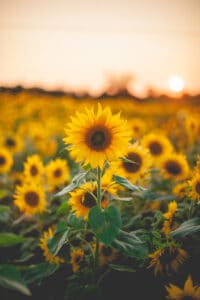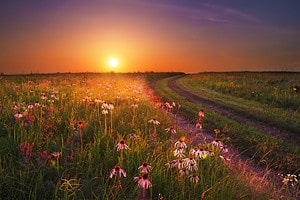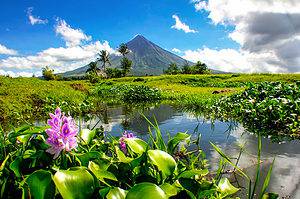As winter fades away and the days start getting longer, nature awakens from its slumber. This is when the world is painted in vibrant colors once again. Among the many breathtaking sights is the sight of yellow spring flowers. These cheerful and sunny blooms seem to have a magic power to lift our mood.
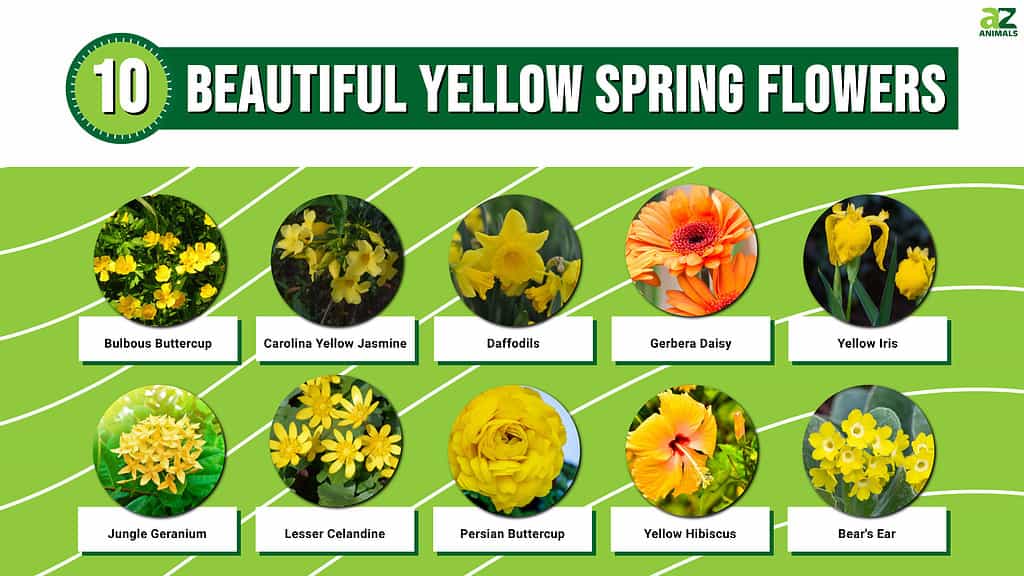
From delicate buttercups to majestic sunflowers, the world of yellow spring flowers is a treasure of breathtaking beauty and wonder. So, let’s take discover some of the most amazing yellow spring flowers nature offers!
Bulbous Buttercup (Ranunculus bulbosus)
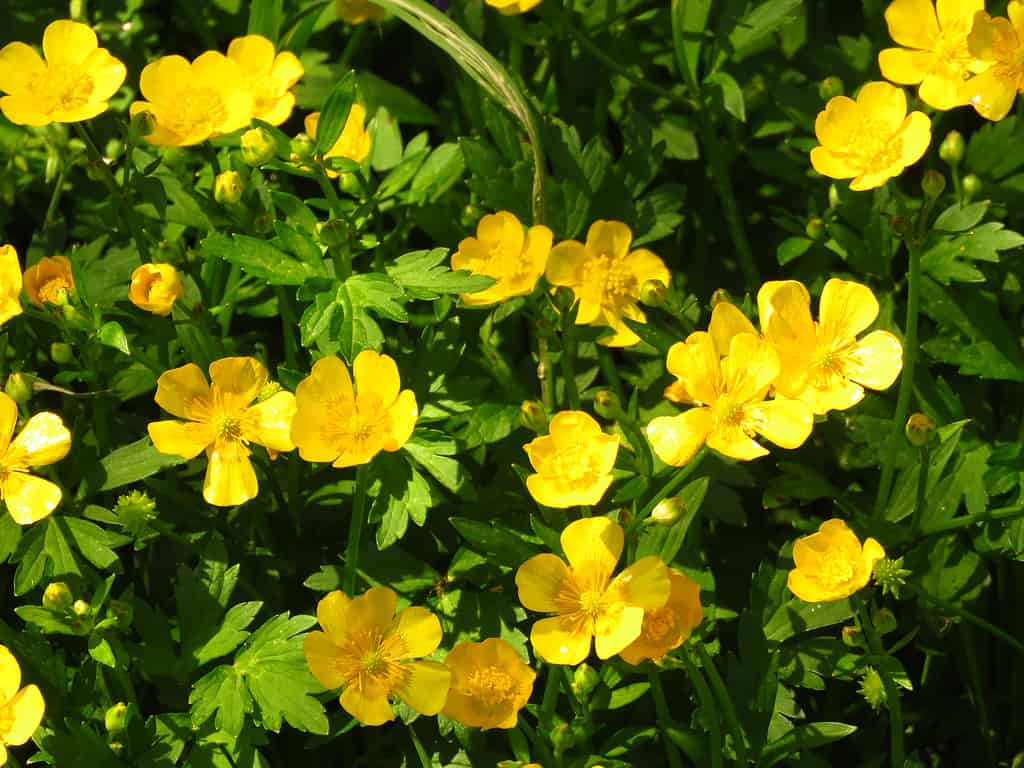
Bulbous Buttercup is intolerant to extreme cold, humidity, or heat.
©Przemyslaw Muszynski/Shutterstock.com
Ranunculus bulbosus, also known as bulbous buttercup. This is a well-recognized springtime flower that can be found growing in fields. They grow in diverse soil ranging from nutrient-rich to chalky with limestone. Standing at 1-2 feet in height, the vibrant yellow flowers face upwards and bloom from March to May.
The plant gets its name from the bulb knot at the base of its stem and flowers. This may not be noticeable unless one pulls back the sepals covering it. Caring for the bulbous buttercup is not overly difficult. But, it is essential to note that the plant prefers a dry and cool climate. This plant is also intolerant to extreme cold, humidity, or heat.
The bulbous buttercup is used to make medicine for several ailments. These include skin diseases, arthritis, gout, nerve pain, influenza, swine flu, and meningitis. However, it is crucial to exercise caution as the plant is poisonous if eaten fresh. It must be dried thoroughly before being used in medicine.
Carolina Yellow Jasmine (Gelsemium sempervirens)
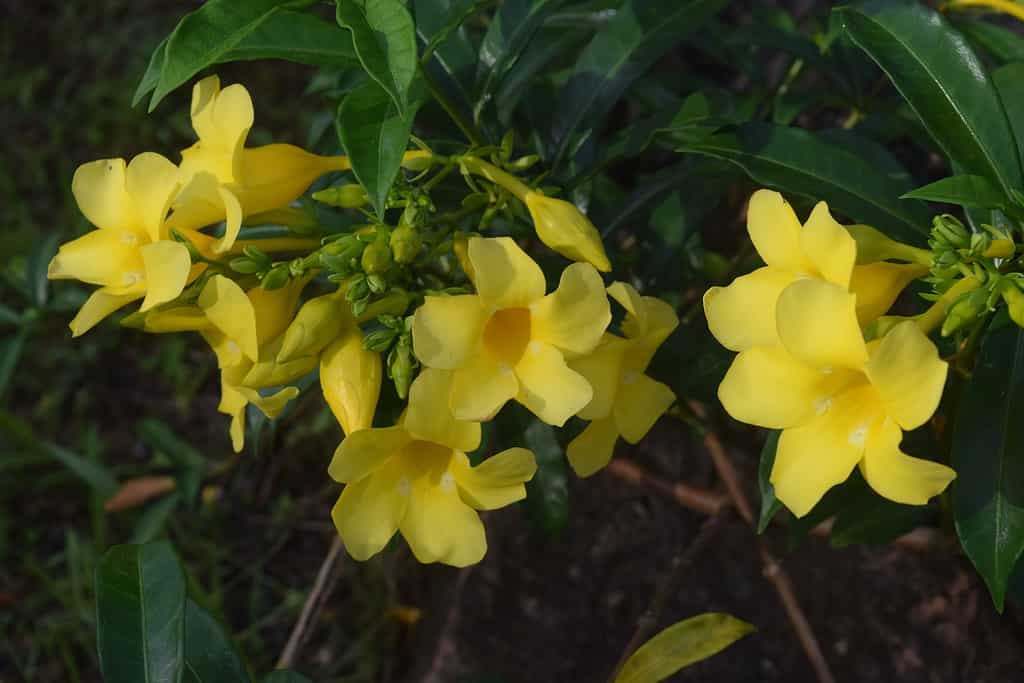
Carolina yellow jasmine can reach 36 feet in height.
©Ayobelajargo/Shutterstock.com
Carolina Yellow Jasmine, the beloved state flower of South Carolina, boasts tiny, fragrant yellow flowers that emerge from its delicate vines. With a blooming period that stretches from February to May, this stunning plant is among the first spring flowers to bloom.
Growing up to 36 feet in height, Carolina yellow jasmine can tolerate some shade but flourishes in full sun. To ensure its maximum potential, it’s best to plant it in nutrient-rich soil and keep it hydrated. Although it is somewhat drought-resistant, a lack of moisture may cause it to shed some leaves, but it will typically recover once watered properly. Fortunately, pests and diseases rarely pose a problem for Carolina jessamine, making it a low-maintenance addition to any garden.
One thing to note is that all parts of this plant usually contain toxic alkaloids, making it poisonous if ingested. Even just one flower could prove fatal, particularly to young children.
Daffodils (Narcissus)
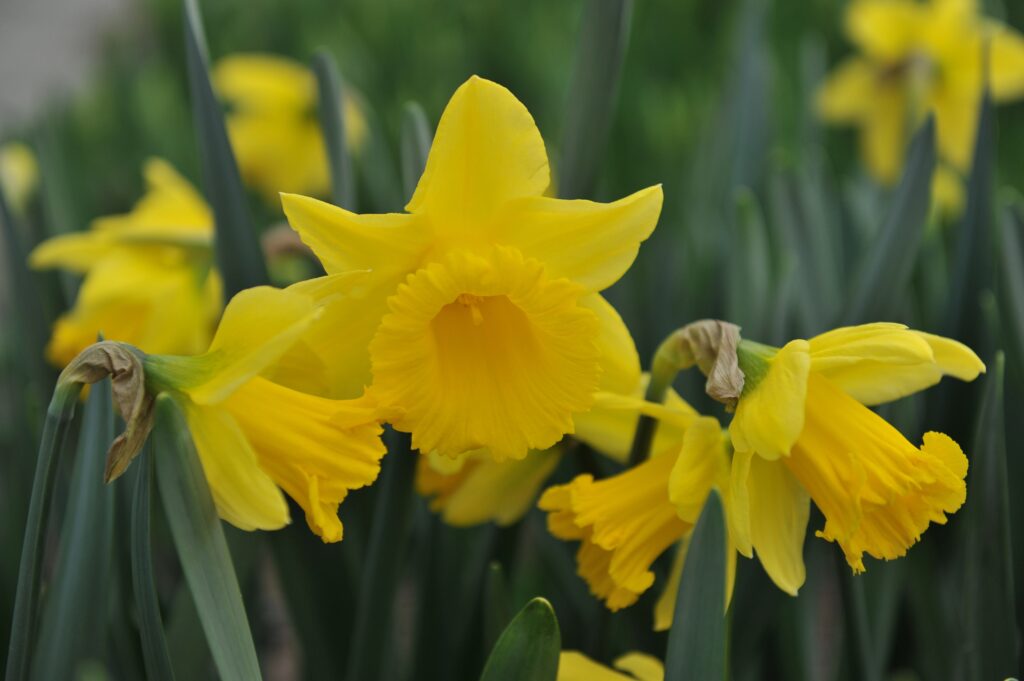
Yellow Trumpet Daffodils.
©Sergey V Kalyakin/Shutterstock.com
Daffodils are a beloved flower species that adds a touch of charm to gardens with their distinctive, glossy leaves and trumpet-shaped blooms. With a high demand for these lovely flowers, daffodils come in various colors. You can choose from a solid yellow flower or a combination of yellow and other hues. As the winter season comes to a close, daffodils start to blossom and can last up to six months, depending on the location.
It’s best to plant daffodils in a sunny area that receives at least six hours of bright sunlight daily. If you plant them in partial shade, you’ll still get green leaves, but they won’t produce any flowers. As with most bulbs, daffodils prefer well-drained soil to avoid rotting.
There are over 25 different species of daffodil, with up to 13,000 hybrids available. Interestingly, they’re also the official flower for the 10th wedding anniversary. According to Chinese tradition, forcing a daffodil to bloom for the Chinese New Year will bring good fortune to your entire household.
Gerbera Daisy (Gerbera jamesonii)
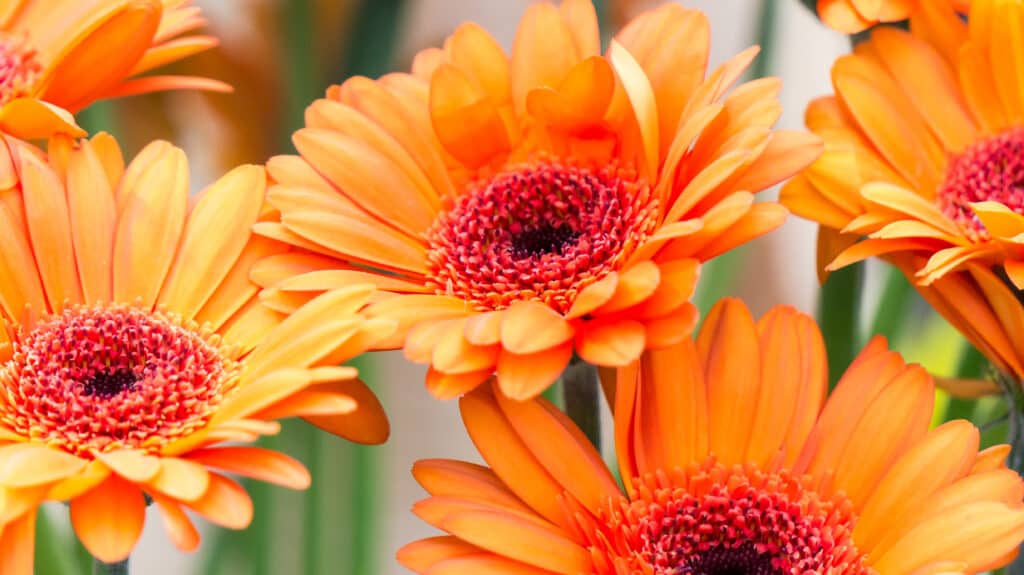
Gerbera Daisies bloom from late spring to fall.
©Andrey Shepetov/Shutterstock.com
If you’re a big, vibrant flower fan, then gerbera daisies might be the perfect fit. These stunning flowers boast a dazzling size of three to four inches and come in solid yellow or bronze-colored petals and yellow-bicolored varieties. Standing tall at six inches above their soft and fuzzy foliage, they make for a mesmerizing sight.
Gerbera Daisies bloom from late spring to fall, making them an ideal choice for those who love to keep their gardens in full bloom throughout the growing season. Additionally, these daisies are perfect for floral arrangements, as they can last a considerable amount of time in vases.
While gerberas daisies enjoy basking in the sun, they do not perform well in intense heat. Full sun exposure is acceptable for North people if the air temperature remains cool. However, for those living in warmer climates, it’s best to plant the daisies in a location that receives dappled shade or catches the morning sun and afternoon shade.
Interestingly, Gerbera Daisies got their name from German botanist Traugott Gerber.
Yellow Iris (Iris pseudacorus)
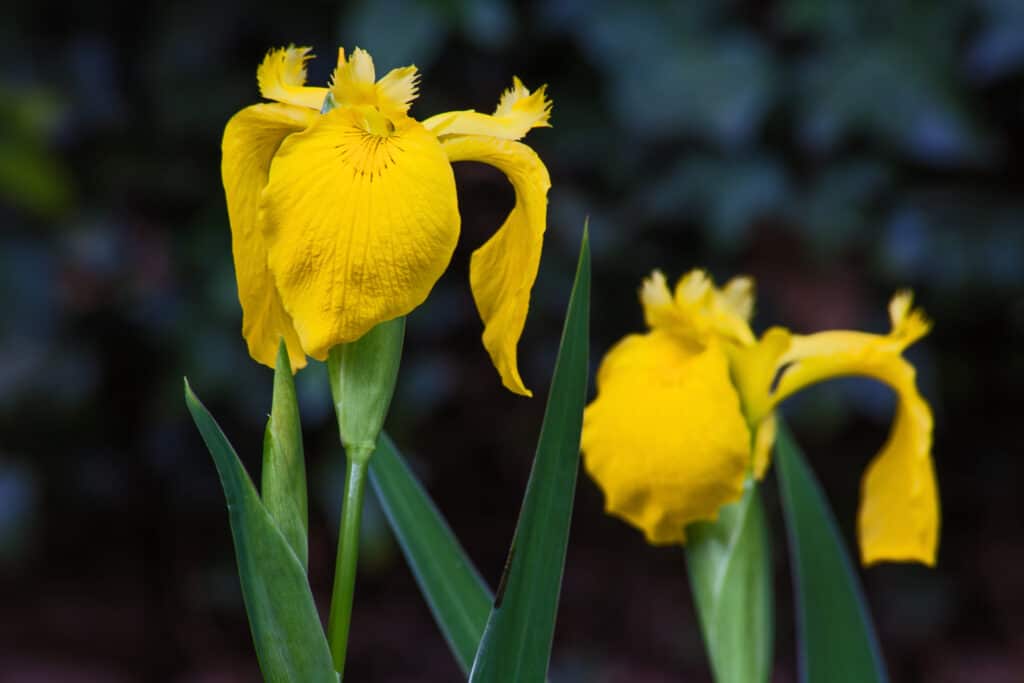
The Yellow Flag Iris (
Iris pseudacorus) is an easy-growing plant that grows in shallow water and boggy areas.
©iStock.com/kobuspeche
Yellow iris is a stunning herbaceous perennial that boasts a vibrant display of eye-catching bright yellow flowers, each measuring about 4 inches wide (10 cm). These flowers grow upright, forming a striking and attractive display. With each flower stalk bearing up to 4-12 flowers, the yellow iris blooms abundantly from late spring to early summer.
The Yellow Iris thrives best in acidic, moist, humus-rich soils (meaning the soil is abundant in organic material) in either full sun or partial shade. To achieve maximum flower production, expose yellow irises to full sun. While the plant prefers constant moisture, it can still grow well in average garden soils, although with slightly less vigor.
Originating from Europe, Asia, and northern Africa, the yellow iris was brought to North America in the late 1700s as an ornamental plant. Its unique features and striking beauty have made it a popular choice for many gardeners and landscapers.
Jungle Geranium (Ixora coccinea)
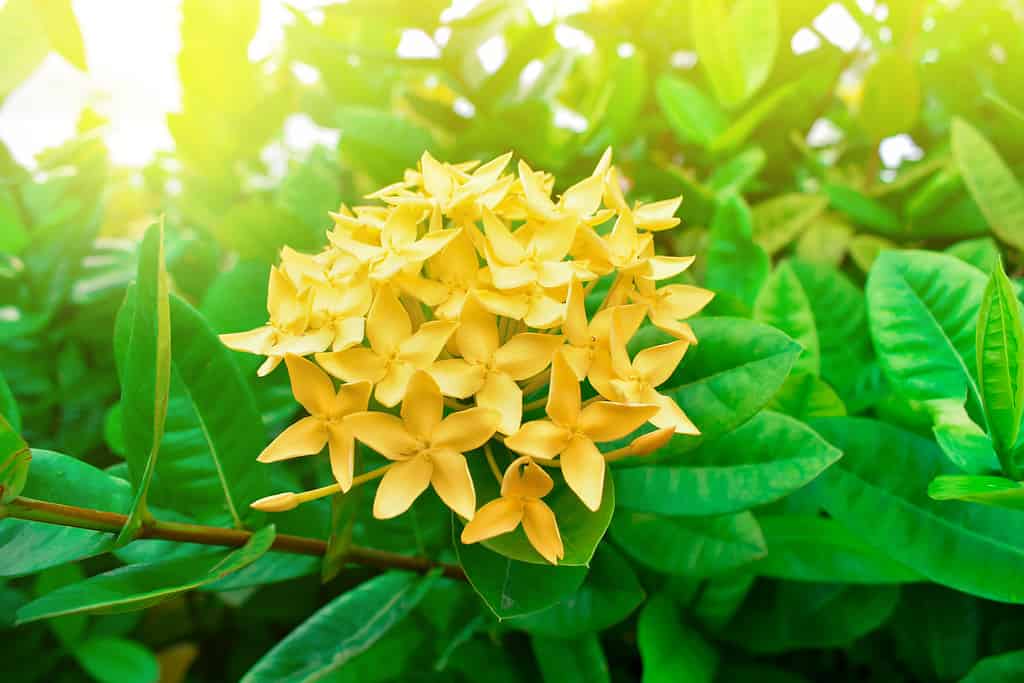
Jungle geranium is low-maintenance.
©Apichan Thongkrajang/Shutterstock.com
This stunning plant can add a pop of color to any garden. It features a cluster of small, tubular flowers that fuse together to form an impressive, large flower-like structure. This plant is attractive to butterflies and hummingbirds, making it a perfect choice for any nature enthusiast.
This lovely shrub belongs to the coffee family, but don’t expect to brew a cup with it! It’s better suited for creating a yellow flowering hedgerow to brighten any outdoor space.
For optimal growth, provide this plant with full sunlight and well-draining, organic loam soil with a slightly acidic pH. Keep the soil moist, but be careful not to overwater.
As for care, jungle geranium is a low-maintenance, salt- and drought-tolerant plant, making it perfect for those who want a vibrant addition to their garden without too much effort. Plus, it blooms continuously throughout the season in warmer regions, providing a long-lasting burst of color!
Lesser Celandine (Ficaria verna)
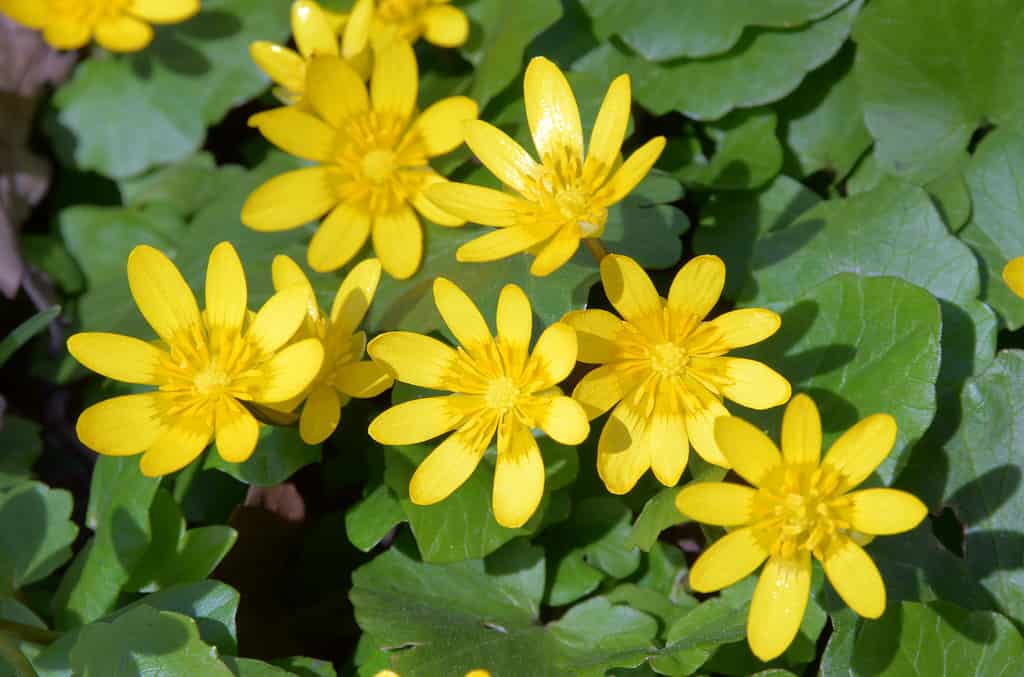
is a species that can become invasive in moist, forested floodplains.
©Anatoliy Vlasov/Shutterstock.com
As spring arrives, you’ll notice the cheerful blooms of lesser celandines. These lovely yellow flowers, about an inch in diameter, are a trademark of the poppy family. While they’re often seen in the wild, many gardeners also love to cultivate them. The plant features glossy, dark green leaves that are fleshy and ovate-cordate in shape, forming spreading rosettes that can reach up to 2 inches in size.
If you’re growing lesser celandine, it’s best to plant them in soil that retains moisture well. You won’t need to add any fertilizers if you simply repot the plant every time it doubles in size. However, it’s important to note that this plant may attract ants, so it’s best to avoid planting it near your home.
Ficaria verna is a species that can become invasive in moist, forested floodplains. It’s a spring ephemeral that grows aggressively, forming dense mats that can crowd out other plant species. This makes it particularly problematic for native forest spring ephemerals, which must compete for space and light against this invasive plant.
Persian Buttercup (Ranunculus asiaticus)
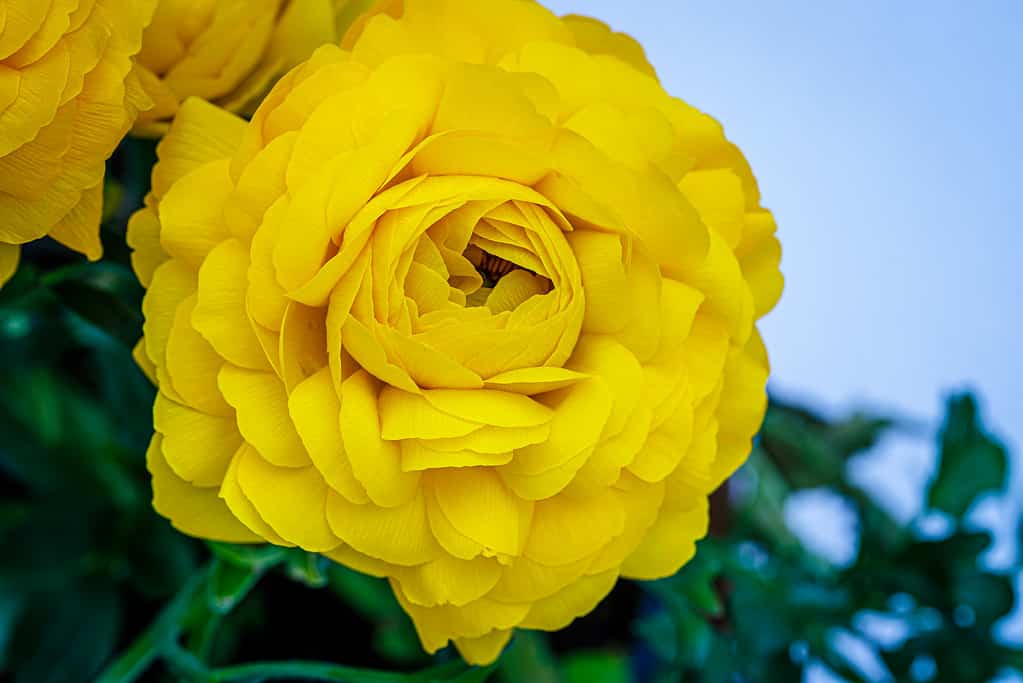
The Persian buttercup requires semi-shade exposure in hot climates.
©nnattalli/Shutterstock.com
Ranunculus asiaticus is highly sought after by gardeners and florists alike for its stunning yellow flowers that feature delicate, crepe paper-thin petals in multiple layers. These tuberous perennials bloom for a period of 4-7 weeks, typically during late spring to early summer in colder regions when planted in spring and during early to mid-spring when planted in fall in milder areas. It is not uncommon for a single Ranunculus plant to produce as many as 35 flowers in a single blooming season.
To thrive, the Persian buttercup requires semi-shade exposure in hot climates, with the early morning sun exposure and full sun in colder climates. They are known to withstand cold temperatures ranging between 32-50 ºF.
The ideal soil for these plants is abundant in clay and sand, and it is recommended to add organic matter several months before planting. Frequent watering is necessary until the flowers bloom, reducing the amount of watering when the flowers wilt.
Ranunculus asiaticus can add brilliance to pots and containers or be planted in garden beds and borders as both perennials or annuals. These magnificent flowers are also perfect for creating beautiful bouquets lasting up to 7 days in a vase, making them a popular choice for florists and weddings alike.
Yellow Hibiscus (Hibiscus brackenridgei)
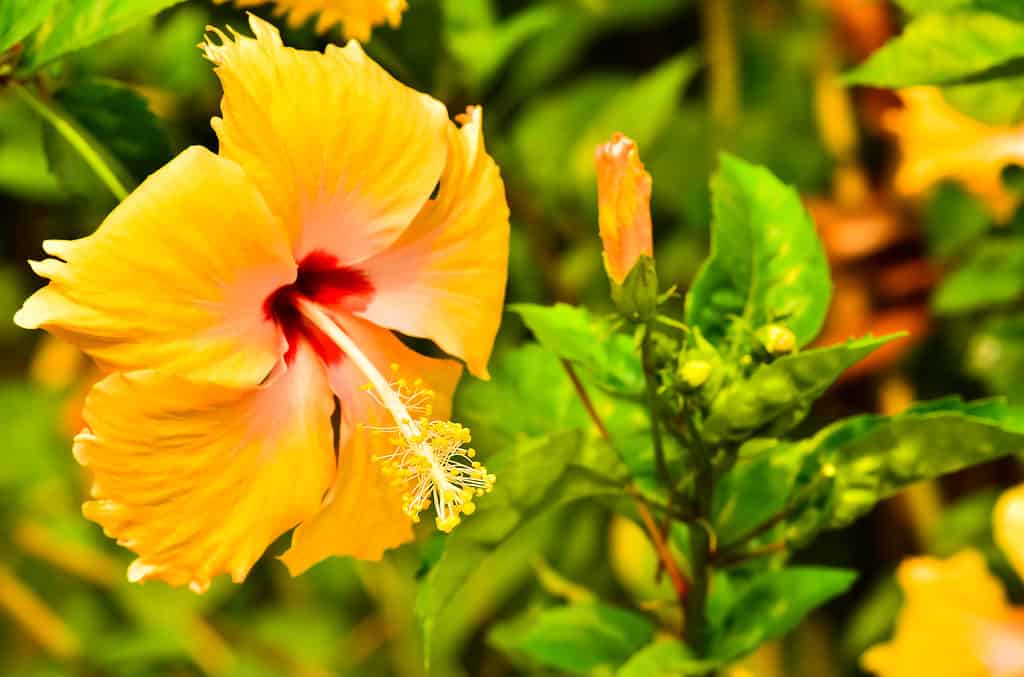
Yellow Hibiscus.
©Nuttapong Wongcheronkit/Shutterstock.com
This flower can grow into either a small tree or a shrub with an open and airy habitat. It is a sight to behold, especially during late winter to late spring, when it produces a profusion of large, pure yellow flowers that can measure up to 4-6 inches. It is not only a native plant to the USA but also holds the honor of being Hawaii’s official state flower.
The yellow hibiscus plant prefers dry, well-drained soils for optimum growth and thrives best under full sun to partial shade. Although it can tolerate some light shade, maximum flower production and disease resistance are achieved when grown under full sun. Once established, this plant can also withstand drought conditions.
However, gardeners should keep a watchful eye for pests such as white flies, mealy bugs, aphids, spiders, and mites. Overwatering can also lead to the development of powdery mildew on leaves and roots to rot.
Aside from being an ornamental plant, yellow hibiscus also possesses excellent medicinal properties. It is a popular ingredient for making tea, which imparts a tart flavor and is rich in vitamin C.
Bear’s Ear (Primula auricula)
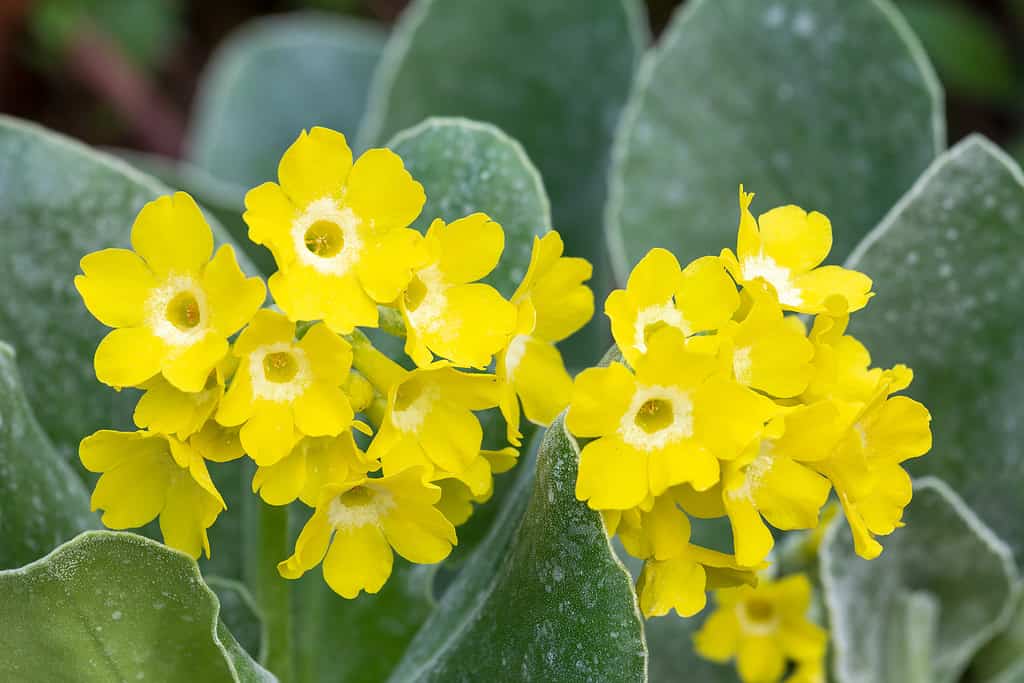
This primrose is hardy and easy to grow.
©Viliam.M/Shutterstock.com
The bear’s ear is a vibrant plant that boasts clusters of bright yellow flowers atop stalks that range from 2 to 8 inches long. The flowers feature five striking petals that attach to a button-like center of the same dazzling yellow hue. A lovely basal rosette of leaves frames the flowers, creating a stunning display. You can expect to see these blooms appear in mid to late spring, and they thrive in various settings.
This primrose is hardy and easy to grow, making it a fantastic choice for those looking to add some colorful charm to their front borders, rock gardens, or containers. With an exposure preference ranging from full sun to partial shade, this versatile plant can adapt to many different environments. For optimal growth, ensure the soil is humus-rich, well-drained, and has a neutral to alkaline pH level.
Originating from the alpine meadows of Northern Europe, the bear’s ear has a rich history that has seen its popularity ebb and flow through two World Wars. However, thanks to the dedication of enthusiasts and breeders worldwide, this plant has once again gained a well-deserved resurgence in popularity.
The photo featured at the top of this post is © Anatoliy Vlasov/Shutterstock.com
Thank you for reading! Have some feedback for us? Contact the AZ Animals editorial team.



